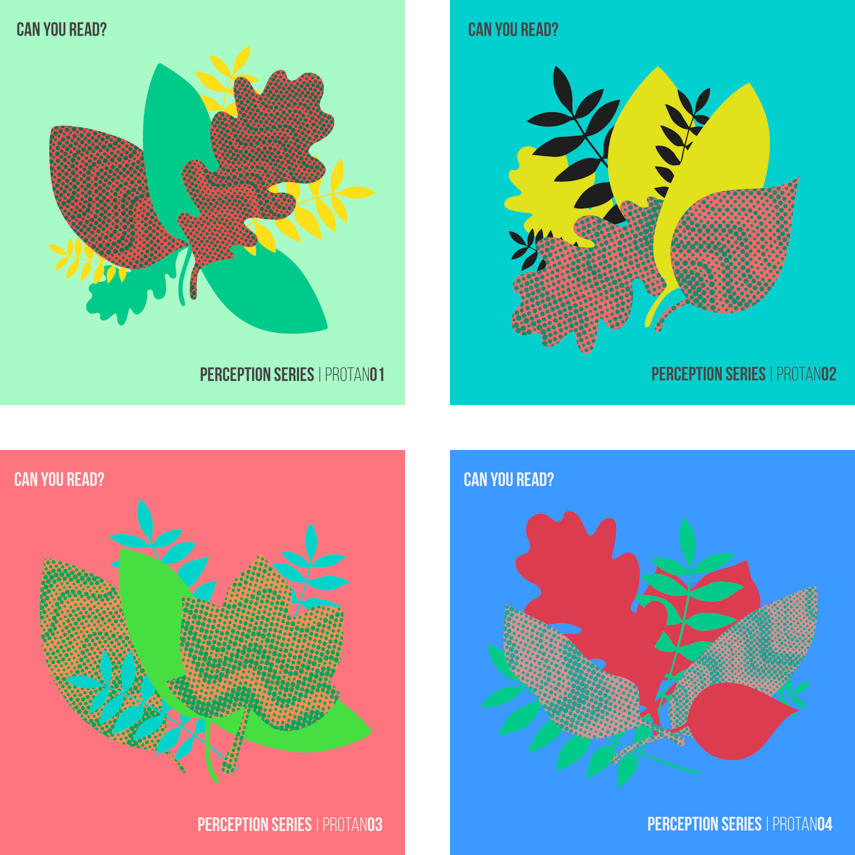Can you read? : Color-Camouflaged Digital Artworks
Focusing on protan color vision deficiency
Conference Proceeding - Artwork | 2017.09
"Can you read?" is a series of four digital artworks aiming to raise awareness and understanding of color vision deficiency. These artworks are intended to look as different as possible to people with normal and color deficient vision by using specific colors that look similar to people with protan color vision deficiency but look significantly different to people with normal vision. Text hidden in the color camouflage patterns are much easier to identify for people with protanopia and protanomaly. The artworks also try to convey their message to people with normal vision by creating a similar experience of what a person with color vision deficiency would feel when encountering color vision tests.
"Can you read/see?" is a very common question when a person with color vision deficiency encounters any color vision deficiency test with a hidden number/text to color vision deficient.
Camouflage technique is inspired by the reverse colorblind tests done by Aaron Clauset and Nick Yee and hidden digit plates by Ishihara Shinobu. Please check the reference section at the bottom for more information.
Normal
Camouflaged texts are only visible to people with protan color vision deficiency. Camouflaged texts are not visible or very difficult to read to people with normal vision and other types of color vision deficiency.

Different types of color vision deficiencies have different insensitive colors based on their color confusion lines. The colors are choosen for the protan color vision deficiency. That is why they look quite different from a perspective of a person with deutan color vision deficiency. Simulations are for strong color vision deficiencies. The difference for people with mild color vision deficiencies should be somewhere in between.
Making of the Camouflage Patterns

Color Selection Simulation

Protan Simulation
Camouflaged texts are visible

Deutan Simulation
Camouflaged texts are not visible

References
[1] Clauset, A., Structure & Strangeness, 2007, Retrieved from:
[2] Ishihara, S., Tests for colour-blindness. Tokyo: Kanehara Shuppan Co., 1972.
[3] Reit, S., Masquerade: The amazing camouflage deceptions of World WarII, New York: Hawthorn Books, 1978.
[4] Saito, A., Mikami, A., Hosokawa, T. & Hasegawa, T.. Advantage of Dichromats Over Trichromats in Discrimination of Color-Camouflaged Stimuli in Humans. Perceptual and motor skills, Vol. 102, No. 1, pp 3—12, 2006.
[5] Sharpe, L. T., Stockman, A., Jägle, H., & Nathans, J. , Opsin genes, cone photopigments, color vision, and color blindness, Color vision: From genes to perception, pp. 3-51, 1999
[6] Viénot, F., Brettel, H., & Mollon, J. D., Digital video colourmaps for checking the legibility of displays by dichromats, Color Research & Application, Vol. 24, No. 4, pp. 243-252, 1999
Thank you for watching




